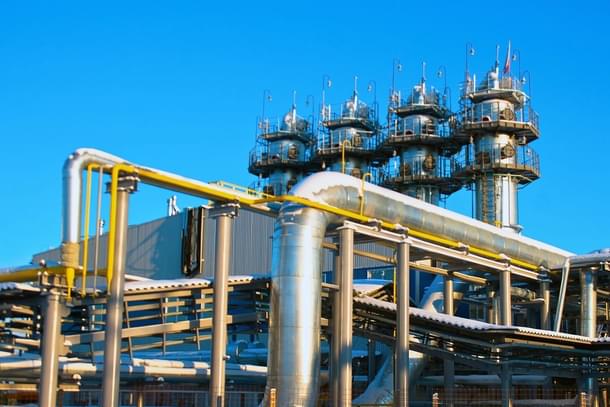Infrastructure
Expansion Of Gas Grid To 33,500 km, Rs 1969 Crore PM JI-VAN Plan For Bioethanol Projects: Government
Swarajya Staff
Jul 26, 2022, 11:31 AM | Updated 11:36 AM IST
Save & read from anywhere!
Bookmark stories for easy access on any device or the Swarajya app.


The government has fast-tracked the process of increasing the share of natural gas in energy mix to 15 per cent in 2030 from about 6.3 per cent with expansion of the national gas grid to about 33,500 km from the current 21,715 km as well as of the city gas distribution (CGD) network and setting up of liquefied natural gas terminals.
The Ministry of Petroleum and Natural Gas is hoping that initiatives as allocation of domestic gas to compressed natural gas in the transport sector and piped natural gas in domestic in no-cut category and allowing marketing and pricing freedom to gas produced from high pressure/high temperature areas, deep water, ultra-deep water and from coal seams will speed up the intent to enhance the component of natural gas in the country’s energy basket.
The development of the CGD network rests on PNG connections and establishment of CNG stations which is carried out by the authorised entities of the Petroleum and Natural Gas Regulatory Board (PNGRB) as per its timelines.
As on 31 May 2022, a total 95.21 lakh PNG domestic connections have been provided and 4,531 CNG stations have been established and after completion of 11A city gas distribution (CGD) round, 295 geographical areas have been authorised covering 98 per cent of India’s population and 88 per cent of its gas, Minister of State for Petroleum and Natural Gas Rameswar Teli informed the Rajya Sabha on Monday (25 July).
An ambitious target has been set for providing 12.33 crore PNG connections by CGD entities and establishing 17,700 CNG stations by 2030 including in rural and urban areas.
All this is important as natural gas is expected to be the fastest growing fossil fuel and India is set to emerge as the third largest energy consumer behind the US and China by 2030, according to the International Energy Agency’s ‘India Energy Outlook’.
A gas based economy driven by the two engines of PNG and CNG delivery which facilitates the agenda of faster adoption of renewable energy is part of the government’s globally aligned climate goal to source 50 per cent of energy requirements from renewable sources.
A greater share of natural gas in the power sector will in turn boost renewable energy capacity to 450 GW by 2030. The government’s aim of increasing the share of natural gas in the primary energy mix involves significant investments in expansion of pipeline infrastructure to realise the “one nation one gas grid” vision.
While 33,500 km natural gas pipeline network has been authorised across the country, 21,715 km of such pipelines are operational and a total of 13,605 km length of pipelines is under various stages of construction.
An important build-up towards meeting these goals has been the introduction of auto fuel in line with carbon emission norms. While Bharat Stage (BS)-II, BS-III and BS-IV quality auto fuels have been introduced in the country since April 2017, considering rising pollution, government decided to move directly from BS-IV to BS-VI emission norms, skipping proposed implementation of BS-V emission norms by April 2020 and BS-VI emission norms from 2024.
The fuel quality has since improved significantly by reducing the permissible Sulphur content and enabled the introduction of advanced emission control technologies and systems for reduction in Nitrogen Oxides emissions in BS-VI vehicles.
The focus has now shifted to reducing auto emissions, phasing out petrol in the next five years and replacing by bio-ethanol blended petrol fuel with financial aid to integrated bio-ethanol projects.
The Government’s Pradhan Mantri JI-VAN yojana is pushing such projects with a total financial outlay of Rs 1,969.50 crore for the period 2018-19 to 2023-24.
The ‘jaiv indhan-vatavaran anukool fasal awashesh nivaran yojana” provides financial support for setting up second generation ethanol projects in the country using lignocellulosic biomass and other renewable feedstock.
An assistance of Rs 150 crore has been approved each to four commercial second generation bio-ethanol projects at Bathinda in Punjab, Panipat in Haryana, Bargarh in Odisha and Numaligarh in Assam. A demonstration project at Panipat in Haryana will get Rs 15 crore. These commercial projects are expected to be commissioned from 2022-23.
A host of measures are in place to promote 2G ethanol Plants including imposition of additional excise duty on non-blended fuels, encouraging studies on identifying areas having the potential of surplus biofuels feedstocks, policy support to mainstream biofuels and separate price for 2G ethanol.
Moreover, 35 Compressed Bio Gas (CBG) plants have been commissioned by oil and gas marketing companies (OGMCs) since 1 October 2018.
The idea is to establish an ecosystem for production of CBG and for promoting its use along with natural gas with incentives like assured price for off-take of CBG with long term agreements by OGMCs, inclusion of CBG projects under priority sector lending by RBI and loan products from various banks for financing of CBG projects.





